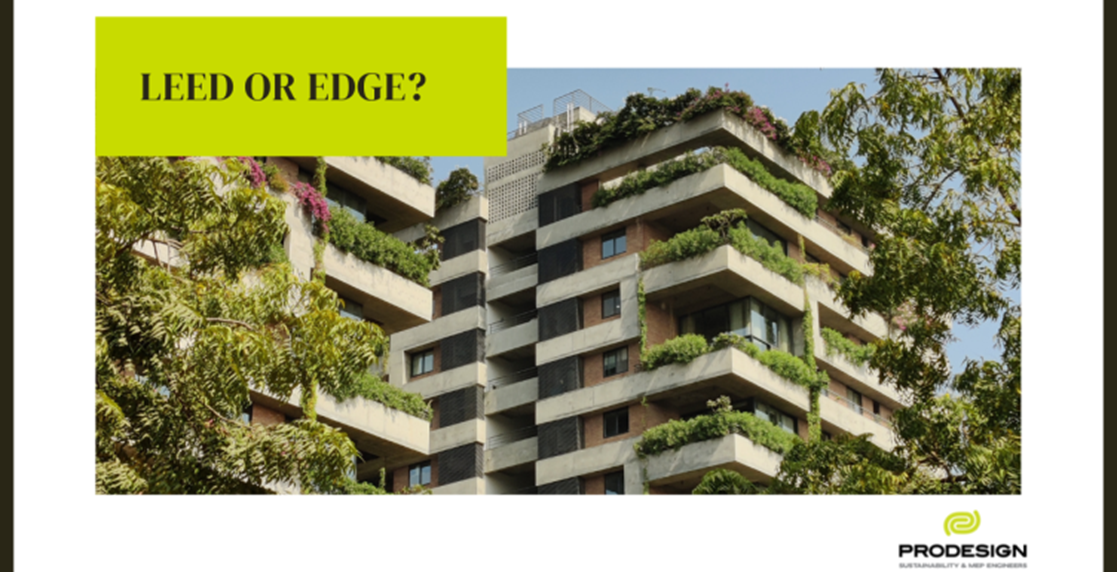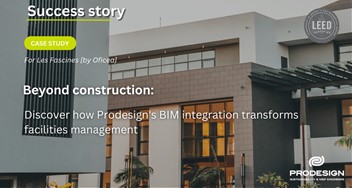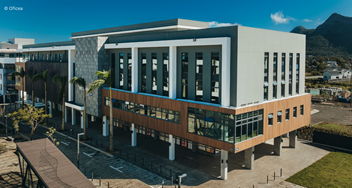To help building owners and operators achieve their sustainability goals, several green buildings certification systems are available and two of them are the Leadership in Energy and Environmental Design (LEED) and the Enhanced Global Performance Rating System (Edge).
LEED (Leadership in Energy and Environmental Design) and EDGE (Excellence in Design for Greater Efficiencies) are two widely recognized green building certification systems. Both systems aim to promote sustainable construction practices, reduce energy consumption and improve the overall environmental impact of buildings. However, there are important differences between the two systems that should be considered when choosing the right rating system for your project.
Rigorous Analysis Process
LEED certification requires a rigorous analysis process, which demonstrates that buildings with LEED certification perform better and have a more significant impact on the environment. The analysis process begins with a comprehensive assessment of the building's design and construction, and it includes a thorough analysis of energy, water, and waste management systems. This analysis is performed through complex dynamic energy simulation, which accurately predicts the building's energy use and identifies areas where energy efficiency can be improved.
In contrast, Edge has a simpler reporting system that does not require the same level of analysis and does not have the same level of rigor. Edge is designed for buildings in emerging markets and does not have the same level of international repute as LEED.
International Repute
LEED is the world's most widely recognized green building certification system and is used in over 160 countries worldwide. Buildings that are certified under the LEED system have a higher level of international recognition and are more likely to attract tenants and buyers who value sustainability. Additionally, LEED is widely recognized by lenders, investors, and government agencies, which can provide additional incentives for building owners and operators.
In contrast, Edge is relatively new and is not as widely recognized as LEED. While Edge is gaining popularity in some emerging markets, it is not yet widely recognized outside of those markets.
Comprehensive Approach
LEED certification takes a comprehensive approach to sustainable design and construction, and it covers a wide range of environmental and social factors. The certification process evaluates the building's design, construction, and operations and provides a roadmap for continuous improvement. This comprehensive approach ensures that the building will have a long-term positive impact on the environment and the health and well-being of its occupants.
In contrast, Edge focuses primarily on energy efficiency and does not address other environmental factors such as water use, waste management, and indoor air quality. While Edge is a useful tool for improving energy efficiency, it does not provide the same level of comprehensive analysis and recommendations as LEED.
Energy Analysis Methods
LEED requires complex dynamic energy simulation, which accurately predicts the building's energy use and identifies areas where energy efficiency can be improved. This simulation provides building owners and operators with valuable information about the building's energy performance and enables them to make informed decisions about energy efficiency upgrades.
In contrast, Edge has a simpler reporting system that does not require the same level of energy analysis. Edge provides building owners and operators with basic information about the building's energy performance, but it does not provide the same level of detail or recommendations as LEED.
Conclusion
In conclusion, while both LEED and Edge aim to improve the environmental performance of buildings, LEED is widely recognized as the premier certification system for sustainable buildings, and it offers a number of advantages over Edge.
LEED is the preferred choice for many owners and operators because of its rigorous analysis process, comprehensive recommendations, and international recognition. Edge, on the other hand, is a useful tool for improving energy efficiency, but does not address other environmental factors and does not provide the same level of analysis as LEED. For building owners and operators who are committed to sustainability and want to make a positive impact on the environment, LEED certification is the clear choice.





